 A special bond was approved on February 17, 1938, and all schools in Jeff Davis Parish were consolidated into one school district. The bond totaled $350,000.00 and a Federal government grant of $178,581.41 brought the total to $528,581.41. With plenty of funds, a building and repair program was launched in 1938 that included every school in the parish.
A special bond was approved on February 17, 1938, and all schools in Jeff Davis Parish were consolidated into one school district. The bond totaled $350,000.00 and a Federal government grant of $178,581.41 brought the total to $528,581.41. With plenty of funds, a building and repair program was launched in 1938 that included every school in the parish.Construction began on a modern concrete and steel school in mid-1938. The cost to build Hathaway High School, including the school, gym, home economics department, and an additional 6-acre purchase of land, totaled $99,926.33. The cost to furnish the school totaled $7,435.17.
The Federal grant was likely W.P.A. funding to hire local labor to build the schools. Oral history has relayed that area residents, in fact, were hired by the W.P.A. to help build Hathaway High School. The timing of this Federal grant coincides with FDR restoring federal funding to Louisiana. FDR redirected federal funds from Louisiana because of Huey P. Long's rejection of the New Deal programs. Long offered his "Share Our Wealth" programs instead and was continued by his successors until Governor Richard Leche, who in late-1937 promised to support New Deal programs.

The school opened in 1939 and was dedicated as a service to and meeting place for the community. When the school opened, students attended only the First through Ninth grades.
Ms. Julia Gary started school in 1936. Her First through Third grades were in the schoolhouses moved to the Hathaway location some years before. Mrs. Jean Jester Doucet started school the year after Ms. Gary. Her class spent their first two grades in one of the wooden frame buildings. When construction on the brick and steel building began behind her school house, she remembers her teacher, Ms. Gibson, often having to lower the blinds to keep peering eyes from the work happening outside. The new building was ready by the start of the 1939-40 school year. Some classrooms were not ready for the start of the school year and the Fifth and Sixth grades had their classes in a schoolhouse in front of the new school. This schoolhouse was also used as the lunch room.
Tenth grade was added in 1940, when the school had a total of 321 students, 54 of those students at the high school level, which included Seventh through 10th grades. There were 267 students in the First through Sixth grades.
The faculty for 1940 included the following teachers:
Mr. L.J. Firestone -- Principal, Mathematics, Science
Ms. Freddie Hill -- First Grade
Mrs. Florence Tuthill -- Second Grade
Mrs. Mary Adair -- Third Grade
Mrs. Ruby Gathier -- Fourth Grade
Mrs. Irma Phenice -- Fifth Grade
Mr. M.J. Shirley -- Sixth Grade
Mr. Earl Luke -- Agriculture
Mrs. Ethma Roberts -- Home Economics, English
Mrs. Thelma Stagg -- Social Science, Library
Mrs. Frances Arnaudet -- Vocal Music
Mr. H.L. Collins -- Band
High School courses offered in 1940 include:
Full-credit -- Agriculture, English, Home Economics, Arithmetic, Algebra, Plane Geometry, General Science, Biology, Chemistry, Commercial Geography, Civics, European History, American History.
Electives -- P.E. (Plays and Games, and Health instruction) and Music (General, Chorus, Glee Club, Band), which were taken incrementally throughout the year and generally earned a 1/4 credit for each year.
Mr. Groth
 By 1943, those who were faculty members of Hathaway High School when it opened, had moved on. The high school faculty in the 1943 included A.D. Jowers, Principal and Agriculture; Ms. Elizabeth Kinchen, Science and Home Economics; Mrs. J.C. Neely, English; and Mr. C.B. Krumnow, History and Mathematics. Some of the more notable faculty members from the 1940's and 1950's are covered below. The most notable faculty member of this period was Charles F. Groth.
By 1943, those who were faculty members of Hathaway High School when it opened, had moved on. The high school faculty in the 1943 included A.D. Jowers, Principal and Agriculture; Ms. Elizabeth Kinchen, Science and Home Economics; Mrs. J.C. Neely, English; and Mr. C.B. Krumnow, History and Mathematics. Some of the more notable faculty members from the 1940's and 1950's are covered below. The most notable faculty member of this period was Charles F. Groth.
Mr. Groth had transferred to Hathaway as Principal in 1944, replacing Mr. Jowers, who had succeeded Mr. Firestone just the year before. These moves were part of adjustments made during World War II. Mr. Groth would remain the principal for nearly 30 years, until he retired in 1971.
Mr. Groth was raised in Elton and graduated from high school there. His last year in high school, then the eleventh grade, was the year electricity came to Elton. He later recalled that he was "finally able to see what he was studying in the evenings." No more reading by candlelight.
When he graduated, he left for Louisiana Tech, where he studied to become a teacher. While there, he lettered in basketball, baseball, tennis, and boxing. After his studies were done, he played minor league baseball as a pitcher in the Evangeline League, but broken fingers ended his run. He taught and coached basketball in Lake Arthur and Elton before coming to Hathaway as principal. In addition to his position as principal, Mr. Groth also taught Math courses. Many students remember him for his Geometry classes.
Most students, though, remember him as a stern hero with matter-of-fact kindness. Young children looked up to him as a "John Wayne" tough guy: When Mr. Groth was on the scene, you knew everything was going to be alright. For many, he was the only principal they ever knew. He was a figure of authority in their lives from a young age into their teens and toward adulthood.
As principal, he had to deal with discipline issues, but his focus was to be more proactive in the lives of children in his charge. Mr. Groth was not one to look for kids getting into trouble. He even wore a set of keys on a chain at his side to let you know he was coming. When you were brought before him though, you would be held accountable. If you were brought before him by a teacher, he wanted your side of the story. If it was trouble between two people, he wanted to know if you were regretful. If you had never visited his office before with trouble, the visit ended with a warning of a harsher penalty, i.e., a paddling, if the trouble continued. He did not like to paddle children, but recidivists left him few options.
The response from the children was respect and admiration. He did not demand respect, he earned it. Children did not fear him; they did not want to let him down. They did not want to disappoint. His leadership was in his expectations. His principal's message from "The Hornet" yearbook in 1951 read is an example of his expectations:
To the Students, Staff, and Faculty:
We, as students and teachers, face many responsibilities and obligations to society. To fulfill these we should attempt to better our ideals and ways of living. Therefore, let time spent at school be for working to the utmost of our abilities so that when situations arise, we can accept our responsibilities.
I would like to express my thanks for your cooperation in helping to carry out a well rounded and progressive school program.
Sincerely,
C.F. Groth, Prin.
Students admired Mr. Groth because he was often among them. Lunch recess in the Spring usually meant the high schoolers would be playing softball back on the diamond inside the track and Mr. Groth would play often enough.
Students trusted Mr. Groth because he was there through the good and the bad. One example of the bad was one Friday afternoon in November 1963. Mr. Groth instantly became part of a "where-were-you" moment for many. It was on that day that Mr. Groth, without the convenience of an intercom, had go from classroom to classroom to repeat the harrowing news that John F. Kennedy had been fatally wounded by an assassin's bullet.
High School Faculty
of the 1940's and 50's
 Brother Krumnow began teaching History at Hathaway in March 1944. He had been in the Hathaway area as a minister at the Raymond Methodist Church for eight years before. He pioneered visual education at Hathaway by bringing his personal projector into his History class to show a film a week and many times he brought his projector into the gym for the entire student body to see. On Friday nights, he would often show a movie in the gym for the community to come see. Brother Krumnow was an important figure in entering students into the 4-H Club. He was the faculty leader for all his years at Hathaway.
Brother Krumnow began teaching History at Hathaway in March 1944. He had been in the Hathaway area as a minister at the Raymond Methodist Church for eight years before. He pioneered visual education at Hathaway by bringing his personal projector into his History class to show a film a week and many times he brought his projector into the gym for the entire student body to see. On Friday nights, he would often show a movie in the gym for the community to come see. Brother Krumnow was an important figure in entering students into the 4-H Club. He was the faculty leader for all his years at Hathaway.
He left teaching in 1953 for a short time and returned in 1956 to teach English and served as the Librarian, filling the vacancy left by Mrs. Toups . He and his wife taught at Hathaway until 1960. For more details on Brother Krumnow, see the Churches of the Hathaway Community post. The Senior Class of 1951 dedicated The Hornet to Brother Krumnow:
Because of his faith in the brighter side of life, his endeavors to better school and community life, his friendliness toward all students, his guidance in the paths of learning, his humorous Texas jokes in class, and his willingness always to help anyone, we, the Senior Class, out of our deep respect for him, take pleasure in dedicating our 1950-51 Hornet to Reverend Clarence B. Krumnow.
He was succeeded as teacher of Social Studies by Louis A. Moore, who, several years after he began teaching, took over as girls basketball coach. His 1962 team were State Champions who went all the way back to the championship game in 1963, where they were runner-up. Mr. Moore succeeded Mr. Groth as Principal in 1971.
Perkins Clifford taught Agriculture from the mid-1940's until 1950, when he left to become the Superintendant of Attendance, i.e. the truant officer for Jeff Davis Parish schools. He more than earned this position while at Hathaway. Even with compulsory attendance requirements, there were households in Hathaway that did not send their children to school or did not enforce the need to attend school. Mr. Clifford visited these homes regularly and had great success in educating parents on the importance and benefits of an education. Mr. Clifford also taught training courses in agriculture for area veterans after WWII, and he was instrumental in getting a canning center built at Hathaway, which would later become the "Ag" building (more below). The Senior class of 1950 dedicated the Yearbook to him. The passage read as follows:
We the Senior class of 1950 dedicate this yearbook to a man who because of his sincere interest in bettering our school and community, has provided our school campus with beautiful shade trees and a much needed canning center. Not only has he helped the campus, but has given a helping hand to every student who walks across it.
Our community has felt his friendly hand upon its shoulders and has gained many things by his helpful guidance.
Because of these things we are proud to dedicate this 1950 "Hornet" to "Mr. Thomas P. Clifford."
Nathan Avant came to Hathaway in 1948. He was one of several in a line of teachers who joined Mr. Clifford in the vocational-agriculture program that updated veterans on current farming techniques and trends after their service in WWII. Mr. Avant worked alongside Mr. Clifford to bring the canning center to Hathaway. In 1950, he became the Agriculture teacher upon Mr. Clifford's departure. Mr. Avant was there when the canning center closed. When the building was transferred to the school, his Agriculture program began to use the building as a classroom and shop. He would continue to teach at Hathaway until 1981. Over the years, he was affectionately known as "Pappy." For several years before his retirement, he served as Vice-Principal. After his retirement from teaching, he became a Methodist minister.
In the early-1950, he and his wife took over the general store on the corner across the street from the school. The Bucklins, Greens, and Harrimans preceded the Avants at the store. They sold food items, including a small deli in the back part of the store. Hardware and cloth material were also their specialty items. Behind the store, Mr. Avant built a warehouse to sell fertilizer and feed. He had a one-ton truck that made deliveries to area farmers. Ernestine Buller, Cleo Comeaux, and Marvin Crochet Sr. worked at the warehouse for several years, but this venture was not meant to be and only lasted a few years. The warehouse withstood Hurricane Audrey though, and probably thanks to Mrs. Avant. She was worried a big door that had been blown open. She ran outside toward the warehouse and the wind blew her down three times before she shut and latched the dooor. She made it back into the house safe.
Miss Katie Vaughn taught Home Economics. She was preceded by Miss Kinchen and then Mrs. Frieda Bucklin and would be succeeded in 1947 by Mrs. Ruth Brown, who began as a teacher at Hathaway under her maiden name, Ms. Anderson. Mrs. Brown was also recruited to coach girls basketball. When she began, she knew nothing about coaching the game of basketball. She played on a successful team in Sulphur during high school, so she had some knowledge of the game. Mr. Groth gave her great guidance. She remembers that, essentially, the more important the games became, the more practices Mr. Groth ran. He was always there to help during games as well, usually as a voice in the crowd that all the players recognized and listened for. And he was always there to assist with medical attention when an injury occurred.
Later, Mrs. Maugerite Pickering, who would later marry Perkins Clifford some years after his wife had passed and he had left Hathaway, became the Home Economics teacher and girls basketball coach. When she began, she also knew nothing about the game of basketball, and she too was given tremendous guidance from Mr. Groth. She was known to carry a lucky penny that she placed along the sidelines during the game; it must have worked because her teams were Class C runner-up in 1954 and 1955.
Mrs. Mary Louise Neely taught English and Library until the mid-term of 1947. Mrs. Bill Buck finished the year for her. Then Harvey Laing followed as English teacher and librarian. He was also the boys' basketball coach until May, 1949 when he left to write for the Jennings newspaper. Then Mrs. Marion Patterson, who was known as "Ms. Toups," came to teach English from 1950 to 1955. She was the driving force behind the school's first Homecoming. She was also the sponsor for the yearbook and for the Senior class, who she accompanied to New Orleans for their senior trip in 1953.
Mr. Laing's coaching duties were turned over to Coach Noticen for a year and then to Robert Fulton, who began teaching Math and Science in 1950-51. Like Mr. Groth, he was a native of Elton, and like many of his colleagues, he was a graduate of SLI in Lafayette. Before SLI, though, Mr. Fulton was enlisted in the Navy. This was a favorite subject of his students. Being clever in bringing up the subject of war, ships, the Navy, etc., his students could frequently find a way to get Mr. Fulton on a tangent that often met the class bell, which was usually met with "Y'all did it to me again." In addition to his teaching duties, Mr. Fulton was also the boys' basketball coach, and a good one at that. He led his 1961 team to the Class C semi-finals, winning Coach of the Year honors.
Elementary faculty
of the 1940's and 50's
As with the high school faculty that taught at Hathaway High School when it opened, most of the elementary faculty that taught there when it opened had gone elsewhere by the mid-1940's. Teachers that came to Hathaway after those inaugural teachers to teach elementary students included the following:
First grade: Mrs. Gertrude Krumnow, who was married to Brother Krumnow, and was also the girls' basketball coach in the mid-1940's until about 1949, then left for several years. She returned in 1952 to teach First grade until 1960, when, the next year, Mrs. Jean Jester Doucet (my First grade teacher) entered the classroom for nearly two decades of teaching at Hathaway High School.
Second grade: Mrs. Florence Hine, who taught Sixth grade for a year when she came to Hathaway, taught in the same classroom for nearly 30 years.
Third grade: Mrs. Myrtle Bucklin took over in the late-1940's and taught in the same classroom for many years. Mrs. Maddie Shelby Grant taught for several years before Mrs. Bucklin.
Fourth grade: Mrs. Myrtle Clifford, who was the wife of Agriculture teacher Perkins Clifford, taught in this classroom for a few years. During her tenure at Hathaway, she passed away after complications in child birth. There was no teacher that held this classroom for more than a few years until the late-1950's when Andrew Weldon came to Hathaway.
Fifth grade: Mrs. Louise Bordelon taught in the same classroom for many years. Her former students that graduated as Seniors in 1958 dedicated the Hornet to her. The Dedication reads as follows:
To our helpful and understanding teacher who has rendered every service possible to uphold the spirit of Hathaway High; to one who has worked without ceasing for our educational improvement; to one who encouraged us and guided us in all our undertakings; who taught us willingly, faithfully and wiht fullest capacity, we, the Senior Class of 1958, proudly dedicate this edition of "The Hornet" to our very own --- Mrs. Louise Bordelon
Sixth grade: Mrs. Neva Groth, the wife of the principal, Mr. Groth, began teaching at Hathaway in 1946 and taught in the same classroom for many years. She was preceded by Mrs. Arthur Hines and Mrs. A.R. Green.
Seventh grade: This classroom belonged to Mrs. Zelda Whittington for the latter-half of the 1940's. Mrs. Hester Vaught took over in 1950 and continued until 1957 when she retired. Leo Lormand took her place the next year.
The elementary classrooms at Hathaway High School from the mid-1940's to the 1960's were occupied by mostly the same teachers the entire time, giving young children a consistent formative education for nearly two-decades. In the 1950's, students entering school for the first grade could count on having Mrs. Krumnow, Mrs. Hines, Mrs. Bucklin, Mrs. Bordelon, Mrs. Groth, and Mrs. Vaught. In the 1960's, a new group of long-tenured teachers came along and again provided a consistent formative education for the young people of Hathaway.
The Stage
When the school was built, the gymnasium included a stage on its west end. When the gym was to be used as the auditorium, the basketball goal was raised out of the line of sight by cranking a winch that pulled the backboard to the ceiling. Rows of chairs were set up facing the stage. Award ceremonies, pageants, and graduations all took place on the stage.
In the early years of the school, the curriculum included P.E. credits for participating in a play. It was typcial in those days for each high school class to put on a play for the community one evening in the Spring. For example, the Seniors of the Class of 1945 put on a thrilling Western comedy, "M'liss," which was taken from Bret Harte's story of the West. In the week before the play, an article ran in the Jennings paper announcing the play and describing the story, and who would play what part. "M'liss" was played that year by Edwina Wade, Donideau Falcon, Alina Landry, Una Havenar, E.J. Doucet, Francis Quibedeaux, Audrey Morgan, Richard Walker, and Eva Derks.
The year before, the Juniors put on a play called "The Bashful Mr. Bobbs," a three act, farce-comedy written by Walter Ben Hare in 1919. The cast included Hilda Kilmer, Una Havenar, Leonard Fontenot, Francis Quibedeaux, E.J. Fontenot, Ada Mae Lejuene, Billy Tramel, Joyce Hetzel, Eva Miller, Zadie Morgan, and Margaret Gary. Dudley Benoit was the stage manager.
Expansion, Renovation, Improvement
Eleventh grade was added in 1941, when the high school was accredited by the State of Louisiana. Twelfth grade was added in 1948. Three years before the addition of grade 12, in 1945, a satellite cafeteria was built on a foundation to replace the frame structure destroyed by a tornado. It was built in the same place as the previous one, diagonally across the school grounds from the corner of Highways 26 and 102, just outside the northwestern corner entrance of the gym. Outside the northern wall of the gym was a gravel parking lot which was fed by an eastern and southern entry from the highway. One driveway was the entry from Highway 26; the other from Highway 102.
Three years after the addition of grade 12, in 1951, a complete renovation began. Newly stained wood was pressed onto the gym floor. A music room was also added to the building’s structure behind the stage, between the boys and girls dressing room additions. The boys’ dressing room was on the southwestern corner of the gym northwestern corner. The new dressing rooms were accessible from the door just inside each gym entrance and a one door to the outside, which were locked most of the time. The improvements cost $100,000 and were completed August 31, 1953.
For several years before the renovation, classes for young farmers were held at Hathaway High School to teach them the newest farming techniques and trends. These classes were funded by the U.S. Veterans Training Program through the Jeff Davis Parish Extension Service to make sure veterans had not missed a step while they were serving our country during World War II. At the same time, Mrs. Ruth Brown recalls, the farmers' young wives would attend classes on cooking, sewing, and receive other homemaking instruction.
About 1949, Mr. Clifford and Mr. Avant spearheaded a drive for a larger space for this training. In their pursuit, their plans expanded to include a freezing operation that would allow people to bring their vegetables and meats to be frozen for keeping. This plan fell through because the machinery needed was expensive and not something the community wanted to get behind. No one had the freezers at home to keep their goods frozen. This idea was about ten years premature. The community then got behind the idea of cannery. They found three large pressure cooker units and one smaller unit. They were affordable and available, so the building became a cannery.
The building was designed and built by a committee that included teachers and others from the community. Orville Phenice was on the committee and played a big role in figuring out what was needed and how to go about constructing the building. The cannery was fully-equipped with giant pressure cookers and large machinery for hulling peas and juicing fruits and vegetables. The cannery was available to anyone in the community. Often times, a truck patch gardner could bring in their load of vegetables and Mr. Lucas Sonnier or another would help get the vegetables cooking and then help to seal the cans.
Some years there was a seasonal schedule for what would be processed and on particular days, anyone with tomatoes, for example, would bring their produce, have it weighed, and then after the canning process would receive their portion of the big batch put in cans and sealed. The cannery was in operation for only a few years. In the mid-1950's, when freezing became the preferred method for food preservation, the cannery was closed and the building was transferred to the school. Mr. Avant would then teach his classes in the new building. The shop, which had been the small cinder block building between the school and the canning center, was moved to the new building where Mr. Avant would teach carpentry, small engines, and welding.
Lucas Sonnier ran the cannery for many years. Mr. Sonnier was also the school's janitor during that time. He worked there until the early-1960's. During that time he was also a barber. For twenty-five cents, you could jump up in his chair for a haircut in the school's boiler room or at his home about a mile from school at the corner of Lantz Road and Highway 26. Mr. Sonnier also built a syrup mill on his property. He and his neighbors farmed sugar cane that they processed into syrup. Each of them grew only a few acres; cane was harvested by hand in those days. Also in the early-1960's, the Hathway Cafe moved from the neighboring property of the school to Mr. Sonnier's property.
In the early 1960’s, Robert's Cove school near Maxie upgraded its lighting on its baseball diamond. Hathaway residents seized this opportunity and arranged to move the old lighting equipment and poles to Hathaway. The diamond was built on the Western end of the Hathaway property near the Principal Groth’s residence. The point of home plate faced the south east. There was a concession stand behind the fence on the third base line. The field was arranged under 75-foot light poles. There was a pole behind home plate, one at first base, one at third base and one in center field.
The scholastic journey was extended to thirteen years in the 1972-73 school year when kindergarten was added, three years before it was mandated for every school by the State. Mrs. Judy Avant was the school's first Kindergarten teacher. To accommodate, portable metal buildings were installed on the back southwestern corner of the school and extended from just outside the boys’ dressing room’s most southern wall to just short of Highway 102.
In 1980, a multi-purpose building was erected outside the gym’s southern wall, between the metal buildings housing kindergartners and other students and the outside wall of the southernmost classrooms in the main building. In the multi-purpose building were basketball goals, rope climbs, bathrooms with entry ways in what was now an extension of the hall beginning in the main building, perpendicular to the southern long hall.
In 1983, increased enrollment demanded more classroom space. A permanent structure was built in front of the main school on the north end between the school and a student parking lot at the north driveway entrance off Highway 26. The free-standing building had a center hall way that ran east-west adjoined to six classrooms with marbled-wooden paneling on the inside, vertical-pleated metal siding on the outside, and was covered with a triangular roof that faced east-west. This structure is a part of the building today and is connected to the current structures main hallway and sits north of the library.
Hathaway has fielded a track team since for many years. Hathaway never hosted a formal track meet on its western property. However, many a sprinter, jumper, runner, and thrower have trained on its western property. The track was a quarter-mile (or thereabout) make-shift oval around the western property. There were no formal boundaries, no cinder, no rubberized tar. There was only a beaten path. The starting point for most running around the track was at the middle point on the oval’s eastern end. This was the most convenient starting point for “tracksters” coming from their dressing rooms. A lap was counter-clockwise and led to the western end of the property, around the softball diamond and back to starting point along the length of the Ag building.
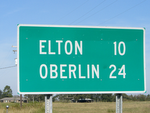
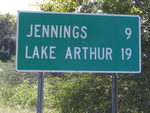
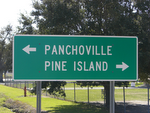
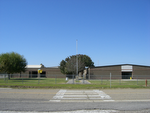
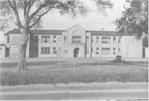


No comments:
Post a Comment